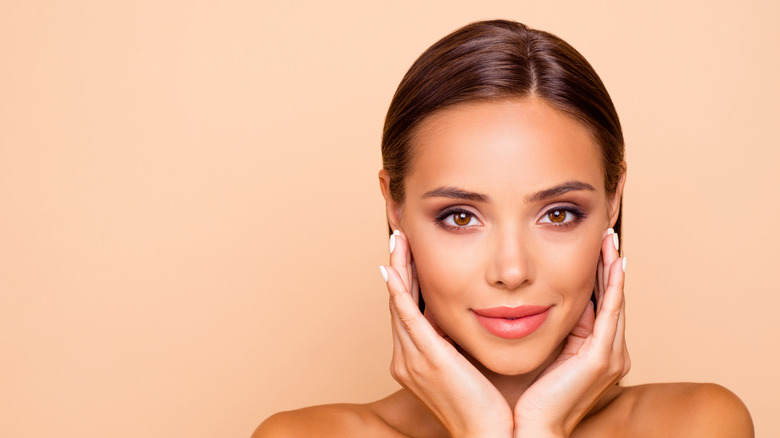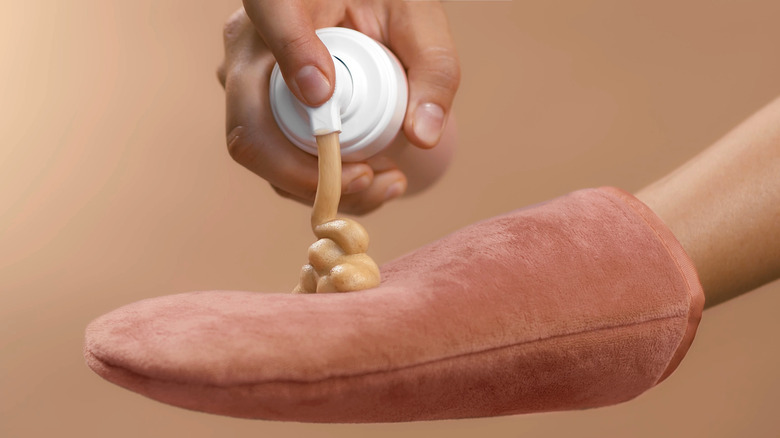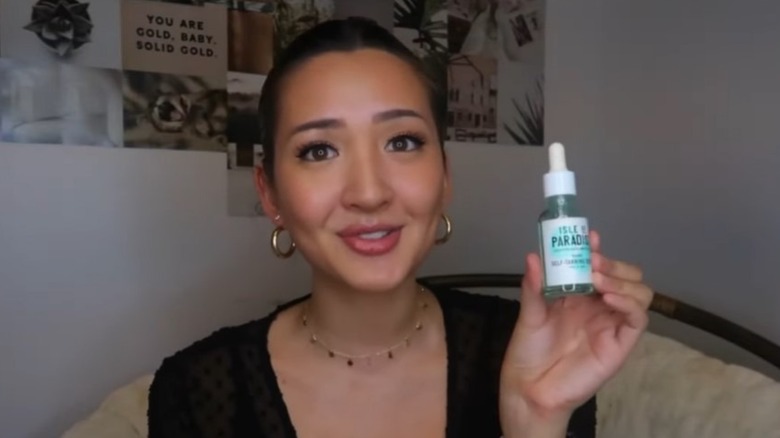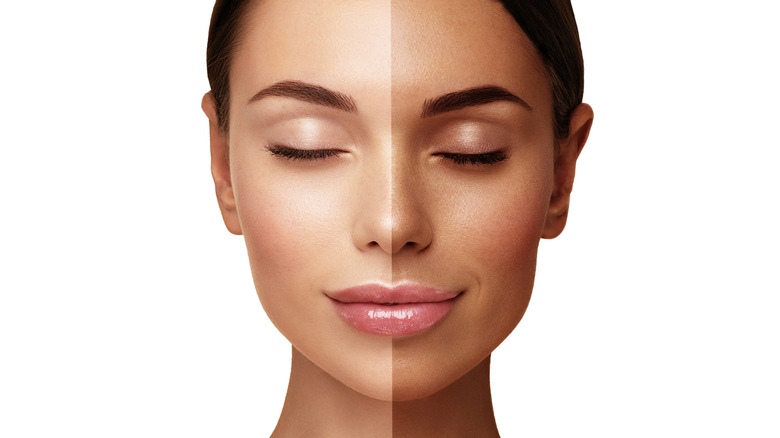The Difference Between Tanning Mousse And Tanning Drops
We may receive a commission on purchases made from links.
Nowadays, there are hundreds of products designed to change some aspect of your appearance. Do you have blond hair but prefer darker tresses? You can dye it. Do you have dark brown or black hair but want some color variety? Add highlights. Lashes or hair too short? Get extensions. Sparse eyebrows? Try microblading. Don't like the shape of your nose? Rhinoplasty.
Also on the long list of alterations that both men and women make to their bodies is changing their skin tone, either temporarily or permanently. Lying out in the sun is obviously one way to make your skin bronze — or burn if you're not careful — but it isn't a year-round option. Sun tanning can also be dangerous or inconvenient for many.
This is why many people opt for skin-darkening products like tanning mousse and tanning drops. Both are self-tanning products designed to give you a darker skin tone from the comfort of your home, and both are easy to apply. So what's the difference between tanning mousse and tanning drops?
Tanning mousse
Tanning mousse is a body tanner that you spray on your skin to darken the tone. Just as with hair mousse, it has an airy, foamy consistency, and it dries quickly after being applied. It's best to apply the mousse with a tanning mitt to prevent streaking, according to St. Tropez. Within four to eight hours, the skin will darken to a golden hue. If you're pressed for time, there are even some tanning mousse options that give you results in as little as one hour, such as the Tanologist Express Self-Tan Mousse or the b.Tan Dark Self-Tanner Mousse, among others.
Before applying tanning mousse, it's important to prepare the skin by thoroughly cleansing and exfoliating it. You should also consider removing any body hair so that the tan has a smooth surface for application. Also, be sure to apply moisturizer to any particularly dry areas of your skin and wait for your skin to dry completely before applying self-tanning mousse.
After your skin has reached the desired tone, take a shower to wash off any excess product. In general, the longer you leave the mousse on, the darker the tan will be. However, you shouldn't exceed the product's recommended maximum wait time. If you do, you could end up with an unnatural or orange-looking tan.
Tanning drops
Unlike tanning mousse, tanning drops have a thick, transparent consistency similar to baby oil. They're applied to the skin via a dropper, so there's no spraying involved like with mousse. Another difference is that many drops are intended to be mixed with a facial moisturizer or foundation, although some can be mixed with body lotion for full-body application, according to Green People.
Just as with tanning mousse, it's important to prep the skin by exfoliating and shaving before applying the drops. After the skin is clean and dry, apply a glob of moisturizer to your palm. Then add the tanning drops. NET-A-PORTER advises adding two or three drops for a subtle, natural appearance. For a more bronzed tone, add more drops. After the drops are added, rub your hands together before rubbing the moisturizer onto your skin.
After applying the tanning drops and lotion to the skin, you can expect to see a bronze tone develop within a few hours with most products. Be sure to follow the instructions on your bottle for the best results. After the allotted time has passed, use warm water and soap to wash your face and anywhere else that you applied the tanning drops.
Drawbacks of tanning mousse and tanning drops
Tanning mousse and tanning drops are both safe alternatives to the harsh UV rays from sun tanning, but they do come with some drawbacks. For one, they're obviously not free like a real sun tan is. Self-tanners come at a range of price points, with some starting at as little as $10 a bottle while premium brands cost around $100 a bottle.
Another disadvantage is that they don't typically offer protection against the sun the way naturally brown skin would. Dr. Adam Friedman, a dermatology professor at The George Washington University School of Medicine & Health Sciences, shared his thoughts on the topic with Time. "Some people think these self-tanners act like sunscreen. They don't," he warned.
One final downside to tanning mousse and tanning drops is that you might not be happy with the results of the first application. This is why some experts, like celebrity self-tanner Sophie Evans, recommend spot testing first. In an interview with HuffPost, Evans said that "conducting a patch test on your skin prior to a full-body application can be a great way to avoid looking unnatural." She adds that the test area should be about 2 inches long and 2 inches wide.



